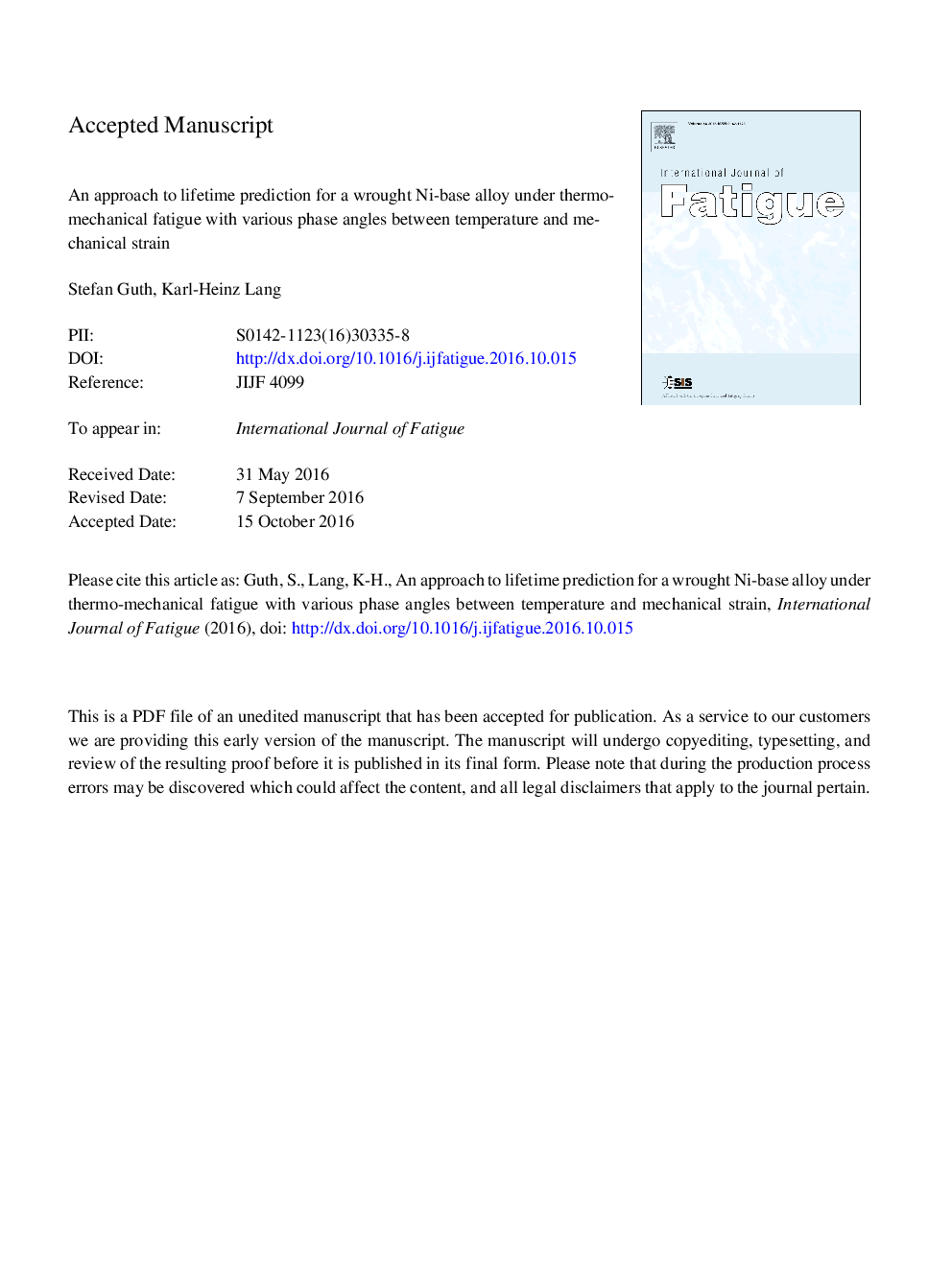| Article ID | Journal | Published Year | Pages | File Type |
|---|---|---|---|---|
| 5015190 | International Journal of Fatigue | 2017 | 27 Pages |
Abstract
Strain controlled TMF tests with a temperature range of 100-850 °C were conducted in air. Phase angles between temperature and mechanical strain were 0° (in-phase, IP), 180° (out-of-phase, OP), +90° (clockwise diamond, CD) and â90° (counter clockwise diamond, CCD). In some tests, optional dwell times of 2, 5 or 30 min were introduced at 850 °C. The TMF-lifetime depends significantly on the phase angle and increases in the sequence IP < CCD < OP < CD. While for IP and CCD loading intergranular damage dominates, the damage in OP and CD tests is mainly transgranular. For all phase angles, wedge-type cracks at grain boundary triple points could be found. The orientation of these wedge type cracks is perpendicular to the loading axis for IP and CCD loading and parallel to the loading axis for OP and CD loading. This behaviour could be explained by phase angle dependent grain boundary sliding. Introducing dwell times leads to lower stress amplitudes and higher plastic strain amplitudes compared to tests without dwells. For OP and CD loading the two effects apparently compensate each other and the overall effect of dwell times on the lifetime is small. For IP and CCD loading, the intergranular damage is reduced due to lower tensile stress at high temperatures. That way, introducing dwells increases the IP and CCD lifetime. Based on the findings, a life prediction approach incorporating two separate damage parameters for intergranular and transgranular damage was developed. For loading cycles with arbitrary phase angles and dwells both parameters yield a lifetime. The parameter giving the shorter lifetime is used for lifetime prediction and also indicates the dominant damage mechanism. The approach allows for a satisfying life prediction within a wide range of testing conditions.
Keywords
Related Topics
Physical Sciences and Engineering
Engineering
Mechanical Engineering
Authors
Stefan Guth, Karl-Heinz Lang,
